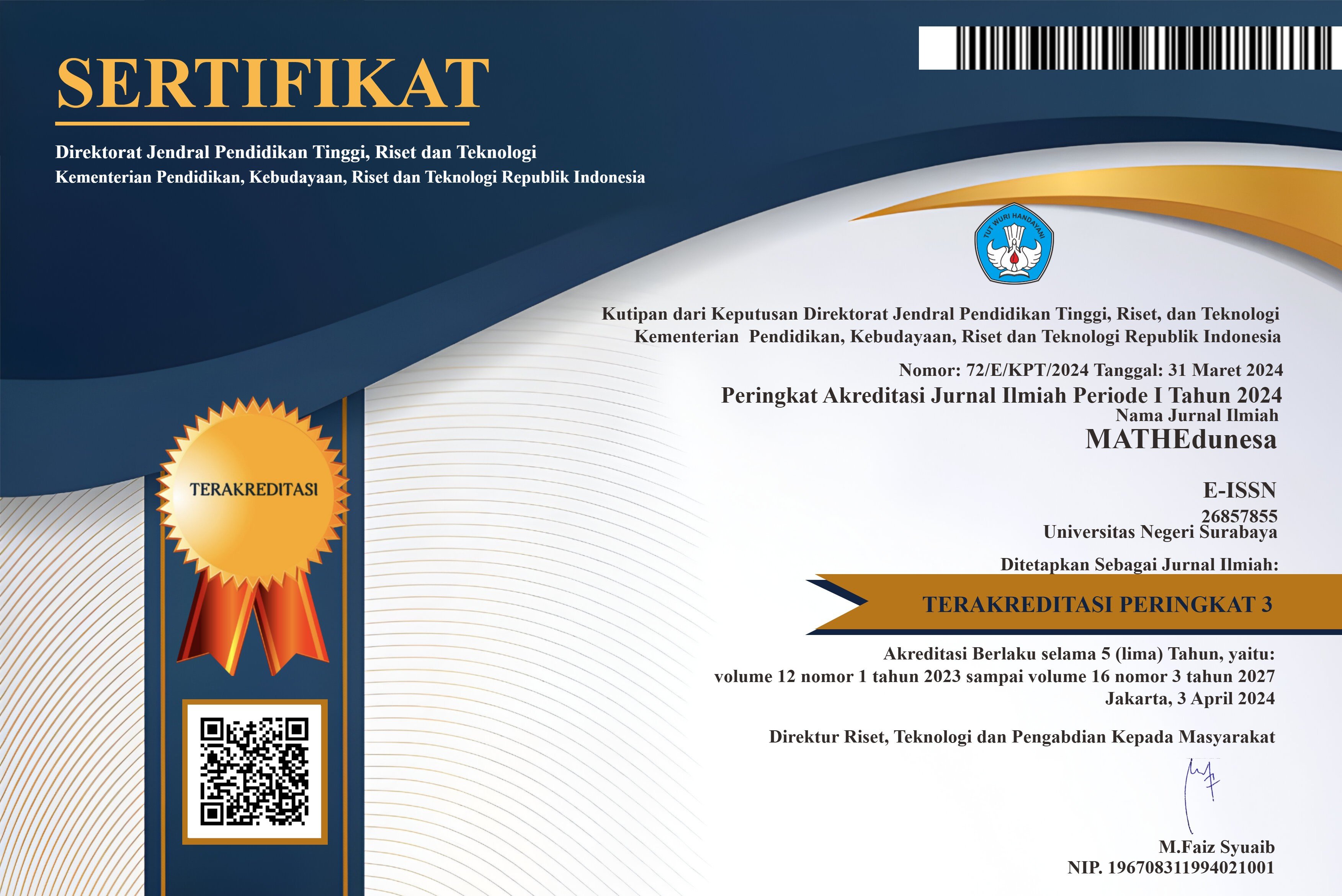Literasi Matematika Peserta Didik SMP Berdasarkan Mathematics Self-Efficacy pada Masalah Statistika Adaptasi PISA
DOI:
https://doi.org/10.26740/mathedunesa.v13n2.p660-673Abstract
This study aims to describe the mathematical literacy of junior high school students in solving statistical problems of PISA adaptation in terms of mathematics self-efficacy. The research subjects were ninth-grade students consisting of one student each with high and low mathematics self-efficacy. This research is qualitative research. Data were collected using a mathematics self-efficacy questionnaire, a mathematics literacy test on statistics problems, and an interview. Data analysis was based on mathematical literacy indicators (formulate, employ, and interpret). The results showed that students with high mathematics self-efficacy can identify mathematical aspects by determining the information known and asked in the problem (formulate), can design and apply problem-solving strategies to get solutions to problems (employ), and can draw conclusions from problem solutions and provide logical reasons and can provide conclusions by the context of the problem (interpret). Meanwhile, students with low mathematics self-efficacy can identify mathematical aspects by determining the known and questionable information in the problem (formulate), but cannot design and apply problem-solving strategies to get the solution of the problem (employ) due to errors in the use of concepts and calculations and can draw conclusions from problem solutions and provide logical reasons and can provide conclusions by the context of the problem (interpret).
Downloads
Downloads
Published
Issue
Section
 Abstract views: 192
,
Abstract views: 192
, PDF Downloads: 1523
PDF Downloads: 1523




